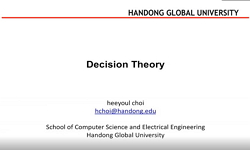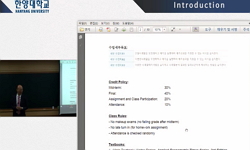본 연구는 기존 전력량 예측 모델의 구조를 변경하여 모델의 예측 능력을 향상 시킬 수 있는 방법에 관하여 연구하였다. 전기에 대한 수요는 그 어느 때보다 증가하고 있다. 산업 부문에서는...
http://chineseinput.net/에서 pinyin(병음)방식으로 중국어를 변환할 수 있습니다.
변환된 중국어를 복사하여 사용하시면 됩니다.
- 中文 을 입력하시려면 zhongwen을 입력하시고 space를누르시면됩니다.
- 北京 을 입력하시려면 beijing을 입력하시고 space를 누르시면 됩니다.

제조업 전력량 예측 정확성 향상을 위한 Double Encoder-Decoder 모델 = Double Encoder-Decoder Model for Improving the Accuracy of the Electricity Consumption Prediction in Manufacturing
한글로보기https://www.riss.kr/link?id=A107185168
- 저자
- 발행기관
- 학술지명
- 권호사항
-
발행연도
2020
-
작성언어
-
- 주제어
-
등재정보
KCI등재
-
자료형태
학술저널
-
수록면
419-430(12쪽)
-
KCI 피인용횟수
0
- DOI식별코드
- 제공처
- 소장기관
-
0
상세조회 -
0
다운로드
부가정보
국문 초록 (Abstract)
본 연구는 기존 전력량 예측 모델의 구조를 변경하여 모델의 예측 능력을 향상 시킬 수 있는 방법에 관하여 연구하였다. 전기에 대한 수요는 그 어느 때보다 증가하고 있다. 산업 부문에서는 그 어느 부문 보다 전기 소모량이 많음으로, 더욱 정확한 공장 지역의 전력량 소모 예측 모델이 잉여 에너지 생산을 줄이기 위해 주목을 받고 있다. 우리는 2개의 개별 encoder와 한개의 decoder를 사용하여, 장기와 단기 데이터를 모두 사용하는 double encoder-decoder 모델을 제안한다. 우리는 제안된 모델을 세홍(주)의 생산 구역에서 2019년 1월 1일부터 2019년 6월 30일 까지 모집된 전력 소모량 데이터에서 평가 하였다. double encoder-decoder 모델은 기존의 encoder-decoder 모델을 사용했을 때와 비교하여 약 10 %의 평균 절대 비율 오차의 감소를 기록 하였다. 본 결과는 제안한 모델이 encoder-decoder 모델에 비해 생산 지역의 전력 사용량의 예측을 더 정확하게 하는 모델임을 보여준다.
다국어 초록 (Multilingual Abstract)
This paper investigated methods to improve the forecasting accuracy of the electricity consumption prediction model. Currently, the demand for electricity has continuously been rising more than ever. Since the industrial sector uses more electricity t...
This paper investigated methods to improve the forecasting accuracy of the electricity consumption prediction model. Currently, the demand for electricity has continuously been rising more than ever. Since the industrial sector uses more electricity than any other sectors, the importance of a more precise forecasting model for manufacturing sites has been highlighted to lower the excess energy production. We propose a double encoder-decoder model, which uses two separate encoders and one decoder, in order to adapt both long-term and short-term data for better forecasts. We evaluated our proposed model on our electricity power consumption dataset, which was collected in a manufacturing site of Sehong from January 1st, 2019 to June 30th, 2019 with 1 minute time interval. From the experiment, the double encoder-decoder model marked about 10% reduction in mean absolute error percentage compared to a conventional encoder-decoder model. This result indicates that the proposed model forecasts electricity consumption more accurately on manufacturing sites compared to an encoder-decoder model.
참고문헌 (Reference)
1 J. Redmon, "You only look once: Unified, real-time object detection" 2016
2 F. Rosenblatt, "The perceptron : A probabilistic model for information storage and organization in the brain" 65 (65): 386-408, 1958
3 T. Hastie, "The Elements of statistical learning: data mining, inference, and prediction" Springer 2017
4 M. Abadi, "TensorFlow: learning functions at scale" 2016
5 S. -Y. Shih, "Temporal pattern attention for multivariate time series forecasting" 108 (108): 1421-1441, 2019
6 Drucker, Harris, "Support vector regression machines" 155-161, 1997
7 A. Graves, "Supervised sequence labelling with recurrent neural networks" Springer 2012
8 W. Kong, "Short-term residential load forecasting based on LSTM recurrent neural network" 10 (10): 841-851, 2019
9 G. Dudek, "Short-Term Load Forecasting Using Random Forests" 821-828, 2015
10 Sutskever, Ilya, "Sequence to sequence learning with neural networks" 3104-3112, 2014
1 J. Redmon, "You only look once: Unified, real-time object detection" 2016
2 F. Rosenblatt, "The perceptron : A probabilistic model for information storage and organization in the brain" 65 (65): 386-408, 1958
3 T. Hastie, "The Elements of statistical learning: data mining, inference, and prediction" Springer 2017
4 M. Abadi, "TensorFlow: learning functions at scale" 2016
5 S. -Y. Shih, "Temporal pattern attention for multivariate time series forecasting" 108 (108): 1421-1441, 2019
6 Drucker, Harris, "Support vector regression machines" 155-161, 1997
7 A. Graves, "Supervised sequence labelling with recurrent neural networks" Springer 2012
8 W. Kong, "Short-term residential load forecasting based on LSTM recurrent neural network" 10 (10): 841-851, 2019
9 G. Dudek, "Short-Term Load Forecasting Using Random Forests" 821-828, 2015
10 Sutskever, Ilya, "Sequence to sequence learning with neural networks" 3104-3112, 2014
11 Y. Bengio, "Representation Learning : A Review and New Perspectives" 35 (35): 1798-1828, 2013
12 L. Breiman, "Random Forests" 45 (45): 5-32, 2001
13 L. Bottou, "On-Line Learning in Neural Networks" 9-42, 1999
14 D. Bahdanau, "Neural Machine Translation by Jointly Learning to Align and Translate" 2015
15 M. Leshno, "Multilayer feedforward networks with a nonpolynomial activation function can approximate any function" 6 (6): 861-867, 1993
16 G. Lai, "Modeling Longand Short-Term Temporal Patterns with Deep Neural Networks" 2018
17 R. K. Agrawal, "Long term load forecasting with hourly predictions based on long-short-term-memory networks" 2018
18 Hochreiter, Sepp, "Long shortterm memory" 9 (9): 1735-1780, 1997
19 J. Cheng, "Long Short-Term Memory-Networks for Machine Reading" 2016
20 K. Cho, "Learning phrase representations using RNN encoder–decoder for statistical machine translation" 2014
21 G. E. P. Box, "Jenkins, Time series analysis : forecasting and control" Holden-Day 1976
22 El Hihi, Salah, "Hierarchical recurrent neural networks for long-term dependencies" 493-499, 1996
23 Song, Fengxi, "Feature selection using principal component analysis" IEEE 1 : 27-30, 2010
24 Y. Cho, "Energy info. Korea"
25 E. Erdogdu, "Electricity demand analysis using cointegration and ARIMA modelling : A case study of Turkey" 35 (35): 1129-1146, 2007
26 J. Zheng, "Electric load forecasting in smart grids using Long-Short-Term-Memory based Recurrent Neural Network" 2017
27 E. E. Elattar, "Electric Load Forecasting Based on Locally Weighted Support Vector Regression" 40 (40): 438-447, 2010
28 T. Luong, "Effective Approaches to Attention-based Neural Machine Translation" 2015
29 G. Huang, "Densely connected convolutional networks" 2017
30 K. He, "Deep residual learning for image recognition" 2016
31 J. Bedi, "Deep learning framework to forecast electricity demand" 238 : 1312-1326, 2019
32 I. Goodfellow, "Deep learning" MIT Press 2017
33 Hall, Mark A, "Correlation-based Feature Selection for Machine Learning" The University of Waikato 1999
34 D. Barber, "Bayesian reasoning and machine learning" Cambridge University Press 2018
35 D. P. Kingma, "Adam: A method for stochastic optimization" 2015
36 T. He, "Accelerating Multi-layer Perceptron based short term demand forecasting using Graphics Processing Units" 2009
37 A. Parikh, "A Decomposable Attention Model for Natural Language Inference" 2016
동일학술지(권/호) 다른 논문
-
- 한국정보처리학회
- 정승연 ( Seungyeon Jeong )
- 2020
- KCI등재
-
스킵연결이 적용된 오토인코더 모델의 클러스터링 성능 분석
- 한국정보처리학회
- 조인수 ( In-su Jo )
- 2020
- KCI등재
-
네트워크 트래픽 데이터의 희소 클래스 분류 문제 해결을 위한 전처리 연구
- 한국정보처리학회
- 류경준 ( Ryu Kyung Joon )
- 2020
- KCI등재
-
- 한국정보처리학회
- 김정엽 ( Kim Jeong Yeop )
- 2020
- KCI등재
분석정보
인용정보 인용지수 설명보기
학술지 이력
| 연월일 | 이력구분 | 이력상세 | 등재구분 |
|---|---|---|---|
| 2027 | 평가예정 | 재인증평가 신청대상 (재인증) | |
| 2021-01-01 | 평가 | 등재학술지 유지 (재인증) |  |
| 2018-01-01 | 평가 | 등재학술지 유지 (등재유지) |  |
| 2015-01-01 | 평가 | 등재학술지 유지 (계속평가) |  |
| 2012-10-31 | 학술지명변경 | 한글명 : 소프트웨어 및 데이터 공학 -> 정보처리학회논문지. 소프트웨어 및 데이터 공학 |  |
| 2012-10-10 | 학술지명변경 | 한글명 : 정보처리학회논문지B -> 소프트웨어 및 데이터 공학외국어명 : The KIPS Transactions : Part B -> KIPS Transactions on Software and Data Engineering |  |
| 2010-01-01 | 평가 | 등재학술지 유지 (등재유지) |  |
| 2008-01-01 | 평가 | 등재학술지 유지 (등재유지) |  |
| 2006-01-01 | 평가 | 등재학술지 유지 (등재유지) |  |
| 2003-01-01 | 평가 | 등재학술지 선정 (등재후보2차) |  |
| 2002-01-01 | 평가 | 등재후보 1차 PASS (등재후보1차) |  |
| 2000-07-01 | 평가 | 등재후보학술지 선정 (신규평가) |  |
학술지 인용정보
| 기준연도 | WOS-KCI 통합IF(2년) | KCIF(2년) | KCIF(3년) |
|---|---|---|---|
| 2016 | 0.35 | 0.35 | 0.28 |
| KCIF(4년) | KCIF(5년) | 중심성지수(3년) | 즉시성지수 |
| 0.23 | 0.19 | 0.511 | 0.06 |





 ScienceON
ScienceON KISS
KISS







